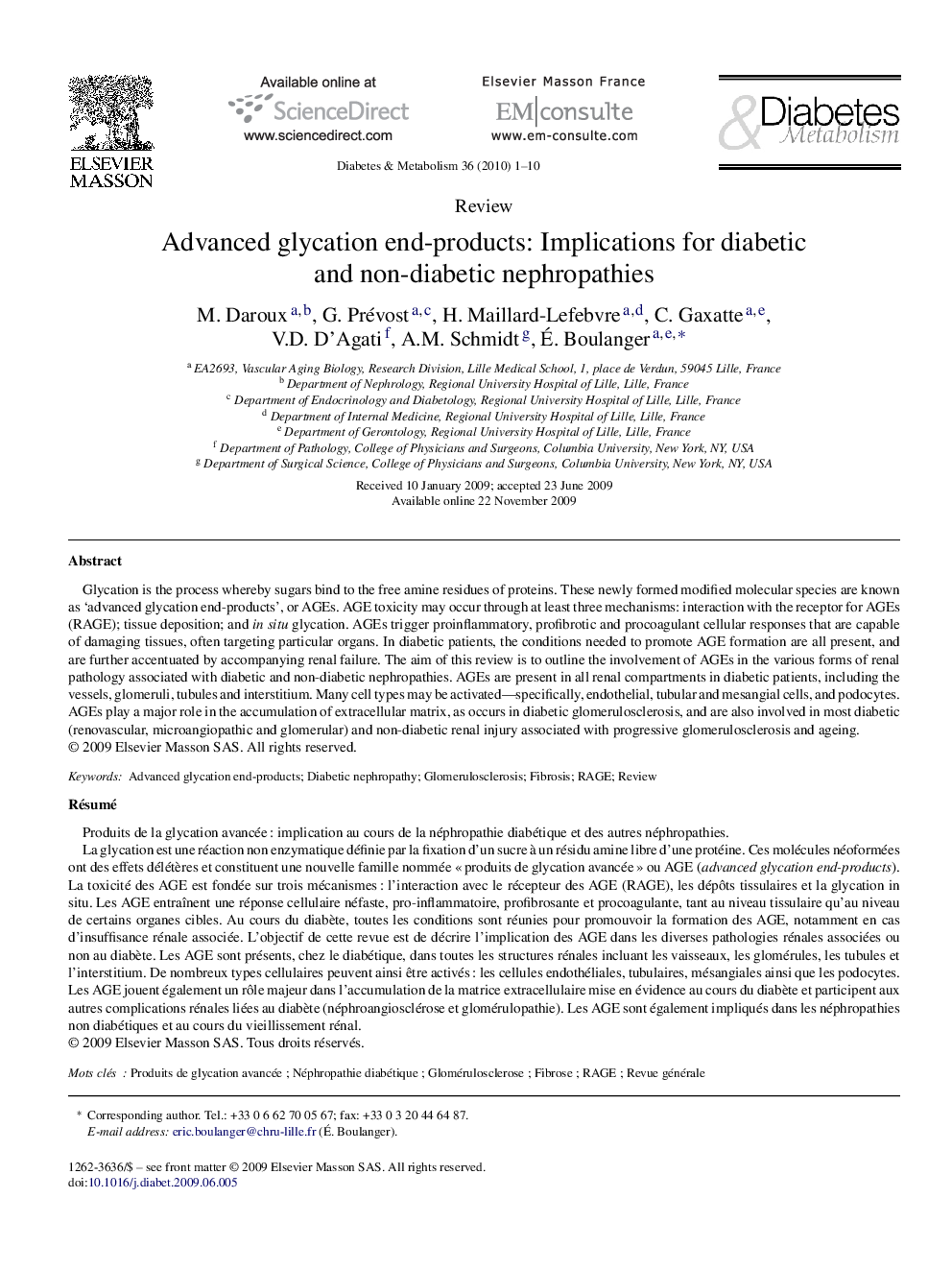| کد مقاله | کد نشریه | سال انتشار | مقاله انگلیسی | نسخه تمام متن |
|---|---|---|---|---|
| 3260391 | 1207620 | 2010 | 10 صفحه PDF | دانلود رایگان |

Glycation is the process whereby sugars bind to the free amine residues of proteins. These newly formed modified molecular species are known as ‘advanced glycation end-products’, or AGEs. AGE toxicity may occur through at least three mechanisms: interaction with the receptor for AGEs (RAGE); tissue deposition; and in situ glycation. AGEs trigger proinflammatory, profibrotic and procoagulant cellular responses that are capable of damaging tissues, often targeting particular organs. In diabetic patients, the conditions needed to promote AGE formation are all present, and are further accentuated by accompanying renal failure. The aim of this review is to outline the involvement of AGEs in the various forms of renal pathology associated with diabetic and non-diabetic nephropathies. AGEs are present in all renal compartments in diabetic patients, including the vessels, glomeruli, tubules and interstitium. Many cell types may be activated—specifically, endothelial, tubular and mesangial cells, and podocytes. AGEs play a major role in the accumulation of extracellular matrix, as occurs in diabetic glomerulosclerosis, and are also involved in most diabetic (renovascular, microangiopathic and glomerular) and non-diabetic renal injury associated with progressive glomerulosclerosis and ageing.
RésuméLa glycation est une réaction non enzymatique définie par la fixation d’un sucre à un résidu amine libre d’une protéine. Ces molécules néoformées ont des effets délétères et constituent une nouvelle famille nommée « produits de glycation avancée » ou AGE (advanced glycation end-products). La toxicité des AGE est fondée sur trois mécanismes : l’interaction avec le récepteur des AGE (RAGE), les dépôts tissulaires et la glycation in situ. Les AGE entraînent une réponse cellulaire néfaste, pro-inflammatoire, profibrosante et procoagulante, tant au niveau tissulaire qu’au niveau de certains organes cibles. Au cours du diabète, toutes les conditions sont réunies pour promouvoir la formation des AGE, notamment en cas d’insuffisance rénale associée. L’objectif de cette revue est de décrire l’implication des AGE dans les diverses pathologies rénales associées ou non au diabète. Les AGE sont présents, chez le diabétique, dans toutes les structures rénales incluant les vaisseaux, les glomérules, les tubules et l’interstitium. De nombreux types cellulaires peuvent ainsi être activés : les cellules endothéliales, tubulaires, mésangiales ainsi que les podocytes. Les AGE jouent également un rôle majeur dans l’accumulation de la matrice extracellulaire mise en évidence au cours du diabète et participent aux autres complications rénales liées au diabète (néphroangiosclérose et glomérulopathie). Les AGE sont également impliqués dans les néphropathies non diabétiques et au cours du vieillissement rénal.
Journal: Diabetes & Metabolism - Volume 36, Issue 1, February 2010, Pages 1–10